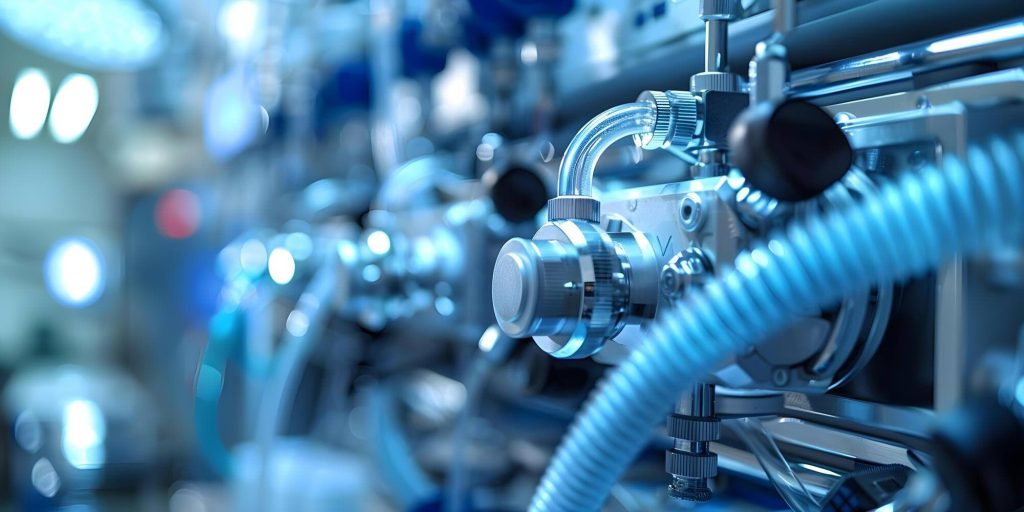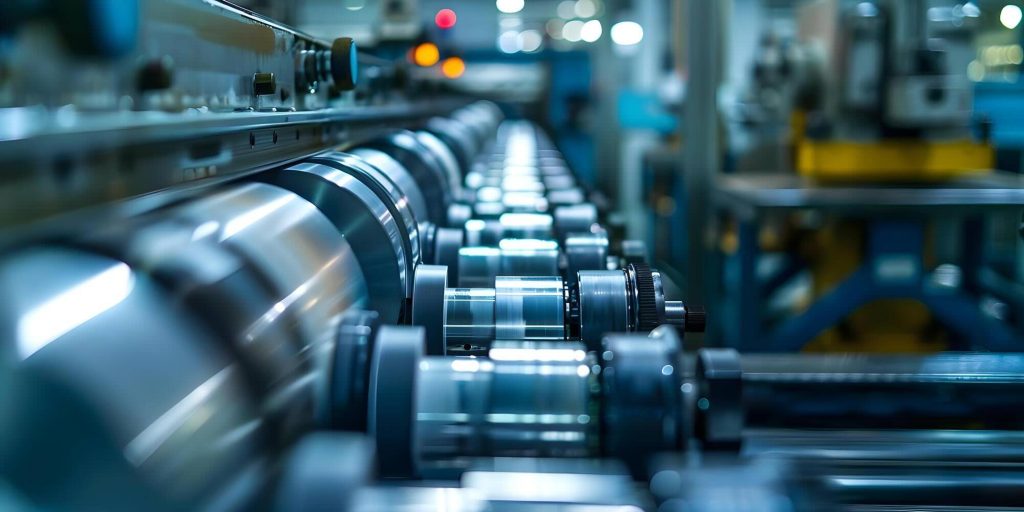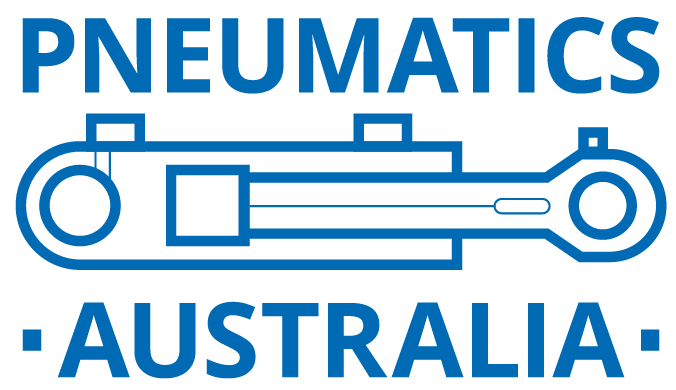Pneumatic Cylinders (Australia) - Air Cylinders for Powering Automation
Pneumatic cylinders in Australia have revolutionised the way businesses approach automation. These devices offer a simple yet effective solution for tasks requiring linear movement, powering everything from small-scale assembly processes to large-scale material handling operations.
Pneumatics Australia is proud to offer a comprehensive range of high-quality pneumatic cylinders designed to meet the diverse needs of industries across the country. From compact cylinders to tie rod cylinders, our cylinders are available in a wide variety of sizes, specifications, and features for your specific application.
With their ability to generate linear movement, provide clamping and lifting force, and adapt to a wide range of applications, pneumatic cylinders are an indispensable component in your automation system.
What Are Pneumatic Cylinders?
At their core, pneumatic air cylinders are mechanical devices that convert the energy of compressed air into linear motion. They consist of a cylindrical chamber, a piston, and a rod attached to the piston. When compressed air is introduced into the chamber, it exerts force on the piston, causing it to move along the cylinder’s axis. This linear motion can then be harnessed to perform various tasks, such as moving, lifting, pushing, or pulling objects.
The main components of a pneumatic cylinder include:
- Cylinder body – The main chamber that houses the piston and rod
- Piston – A disc-shaped component that moves back and forth within the cylinder
- Rod – A shaft attached to the piston that extends and retracts to transmit motion
- End caps – Sealing components at either end of the cylinder
- Ports – Openings that allow compressed air to enter and exit the cylinder
- Seals – Components that prevent air leaks and ensure efficient operation
One of the main advantages of using pneumatic cylinders in automation is their simplicity and reliability. With few moving parts and a straightforward design, pneumatic cylinders are easy to maintain and less prone to breakdowns compared to more complex systems.
They also offer excellent power-to-weight ratios, making them suitable for a wide range of applications without adding excessive bulk or weight to your equipment.

How Pneumatic Cylinders Power Automation Processes
The working principle of pneumatic cylinders revolves around the use of compressed air as the power source. When air is compressed, it stores potential energy that can be released to generate motion. In a pneumatic system, an air compressor pressurises the air, which is then regulated and directed into the cylinder through control valves.
When compressed air is introduced into the cylinder chamber, it exerts a force on the piston, causing it to move along the cylinder’s length. The piston rod, attached to the piston, extends or retracts, providing the linear motion required to actuate the connected load or mechanism. By controlling the flow of air into and out of the cylinder through valves, the speed, force, and direction of the piston’s movement can be precisely regulated to achieve the desired motion profile.
This simple yet effective principle of converting air pressure into mechanical motion offers several benefits for automation applications:
- Reliability – Known for their robust construction and ability to operate consistently in demanding industrial environments, pneumatic cylinders ensure reliable performance even under heavy use
- Precision – With proper control and regulation of air pressure, pneumatic cylinders can achieve high levels of precision and repeatability in their motion. This is essential for tasks requiring accurate positioning or delicate handling
- Efficiency – Pneumatic systems are highly efficient in converting energy from compressed air into mechanical work, minimising energy losses and contributing to overall efficiency
Our Range of Pneumatic Cylinders
We offer a comprehensive range of pneumatic cylinders to suit all kinds of automation applications.
Double-Acting Cylinders
Double-acting cylinders are the most common type of pneumatic cylinder, using compressed air to power the piston in both the extend and retract strokes. They offer precise control, high force output, and fast cycling times, making them suitable for a wide range of automation applications.
Our double-acting cylinders are available in various bore sizes, stroke lengths, and mounting options to suit your specific requirements.
Single-Acting Cylinders
Single-acting cylinders use compressed air to move the piston in one direction, while a spring or external force returns the piston to its starting position. They are ideal for applications where the return stroke is not critical or where a fail-safe return is required.
Our single-acting cylinders are compact, cost-effective, and easy to install, making them a popular choice for simple automation tasks.
Rodless Cylinders
Rodless cylinders provide linear motion without the need for a protruding piston rod, making them ideal for applications where space is limited. They use a mechanical coupling and seal strip or cable system to connect the piston to the carriage, allowing for longer stroke lengths in a compact footprint.
Our rodless cylinders are commonly used in material handling, packaging, and other applications where a slim, space-saving design is required.
Rotary Actuators / Cylinders
Rotary actuators (or rotary cylinders) convert linear motion into rotary motion, providing a simple and efficient way to generate rotational force. They use a rack and pinion or vane-type design to convert the linear motion of the piston into a rotary output
Our rotary actuators are ideal for applications such as valve actuation, clamping, and indexing, where precise rotational control is required.
Grippers
Pneumatic grippers are specialised end-effectors designed for grasping and manipulating objects in automated systems. They use compressed air to open and close the gripper jaws, providing a secure and reliable hold on the workpiece.
Our grippers are available in various configurations, including parallel, angular, and three-jaw designs, to accommodate different object shapes and sizes.
Vacuum Generators / Suction Cups
Vacuum generators and suction cups are pneumatic devices that use the venturi effect to create a vacuum for lifting and holding objects. They are commonly used in material handling, packaging, and assembly applications where gentle, non-marring handling is required.
Our vacuum generators and suction cups are available in a range of sizes and materials to suit different load capacities and surface types.
Compact Cylinders / Mini Cylinders
Compact cylinders (or mini cylinders) are designed for applications where space is at a premium. They offer the same functionality as standard cylinders but in a smaller, more compact package.
Our compact cylinders are ideal for use in tight spaces, such as in robotic end-of-arm tooling, small machinery, and portable equipment.
Guided Cylinders
Guided cylinders are designed to provide precise, stable linear motion by incorporating guide rods or bearings to support the piston rod. This minimises side loading and ensures smooth, accurate movement, even under heavy loads.
Our guided cylinders are commonly used in applications where high precision and repeatability are essential, such as in machine tools, testing equipment, and assembly systems.
Tie Rod Cylinders
Tie rod cylinders are heavy-duty cylinders that use external tie rods to provide additional strength and stability. The tie rods connect the end caps, allowing the cylinder to withstand higher forces and side loads.
Our tie rod cylinders are ideal for demanding industrial applications, such as in presses, clamping systems, and heavy lifting equipment.
Short Stroke Cylinders
Short stroke cylinders are designed for applications requiring short, precise movements. They have a compact design with a short piston rod travel, making them ideal for use in space-constrained areas.
Our short stroke cylinders are commonly used in applications such as part ejection, tool clamping, and small-scale positioning tasks.
American Pneumatic Cylinders
American pneumatic cylinders are designed to meet the standards and specifications of the National Fluid Power Association (NFPA). These cylinders are known for their durability, reliability, and interchangeability, making them a popular choice for industrial automation applications in Australia and worldwide.
We stock a wide range of American pneumatic cylinders to meet your specific needs.
Applications of Pneumatic Cylinders
The versatility of pneumatic cylinders makes them suitable for a wide range of industrial automation applications. Some common use cases include:
Material Handling and Conveying
Pneumatic cylinders are widely used in material handling systems to move, sort, and transfer products along production lines. They can be used to actuate gates, diverters, and stops, ensuring smooth and efficient material flow.
Clamping and Holding
In machining and assembly processes, pneumatic cylinders are employed to clamp and hold workpieces securely in place. Their adjustable force and compact size make them ideal for use in fixtures, jigs, and other workholding devices.
Lifting and Pressing
Pneumatic cylinders can provide the necessary force for lifting and pressing operations, such as raising and lowering machine components, applying pressure in forming processes, or operating presses for stamping and punching.
Dispensing and Filling
In packaging and filling applications, pneumatic cylinders are used to control the dispensing of liquids, powders, or granular materials. They can be integrated into filling machines, dosing pumps, and other dispensing equipment.
Gate and Door Actuation
Pneumatic cylinders are commonly used to open and close gates, doors, and other barriers in automated systems. Their fast response times and adjustable speed control make them suitable for high-speed, repetitive actuation tasks.
With pneumatic cylinders, industries can automate a wide range of tasks, improving productivity, consistency, and safety while reducing labour costs and manual intervention.

Factors to Consider When Choosing Pneumatic Cylinders in Australia
To ensure optimal performance and reliability, it's essential to select the right pneumatic cylinder for your specific application. Consider the following factors when making your choice:
Application Requirements
Clearly define the task the cylinder will perform, including the required force, speed, and precision. Consider any special requirements, such as corrosion resistance, high temperature operation, or food-grade compatibility.
Environmental Conditions
Evaluate the operating environment, including temperature, humidity, and the presence of dust, dirt, or other contaminants. Choose cylinders with appropriate seals, materials, and surface treatments to withstand these conditions.
Mounting Options
Consider how the cylinder will be mounted and integrated into your system. Select a cylinder with the appropriate mounting style, such as foot, flange, or clevis mounts, to ensure proper alignment and stability.
Stroke Length and Bore Size
Determine the required stroke length and bore size based on your application's force and speed requirements. Longer stroke lengths and larger bore sizes generally provide greater force output but naturally require more space.
Operating Pressure and Force
Ensure that the selected cylinder can operate at the available air pressure and generate the required force. For single acting applications, consider the cylinder's force output at both the beginning and end of the stroke, as well as any external forces acting on the piston rod.
Speed and Cushioning
Select a cylinder with the appropriate speed capabilities and cushioning options to ensure smooth, controlled motion. Cushioning helps to decelerate the piston at the end of the stroke, reducing impact and extending cylinder life.
Durability and Maintenance
Choose cylinders with robust construction and high-quality materials to ensure long service life. Consider the cylinder's maintenance requirements, such as lubrication and seal replacement intervals, to minimise downtime and ensure reliable operation.
Contact Us for Additional Information
As industries continue to embrace automation, the role of pneumatic products in driving efficiency, precision, and productivity has never been more critical.
Pneumatics Australia is uniquely positioned to help you improve your operations, increase your profitability, and stay ahead of the competition. With our extensive range of premium components, expert support, and customised solutions, we enable your systems to operate with greater efficiency and reliability.
Contact us today to discuss your requirements and discover how our pneumatic solutions can take your business to the next level.
